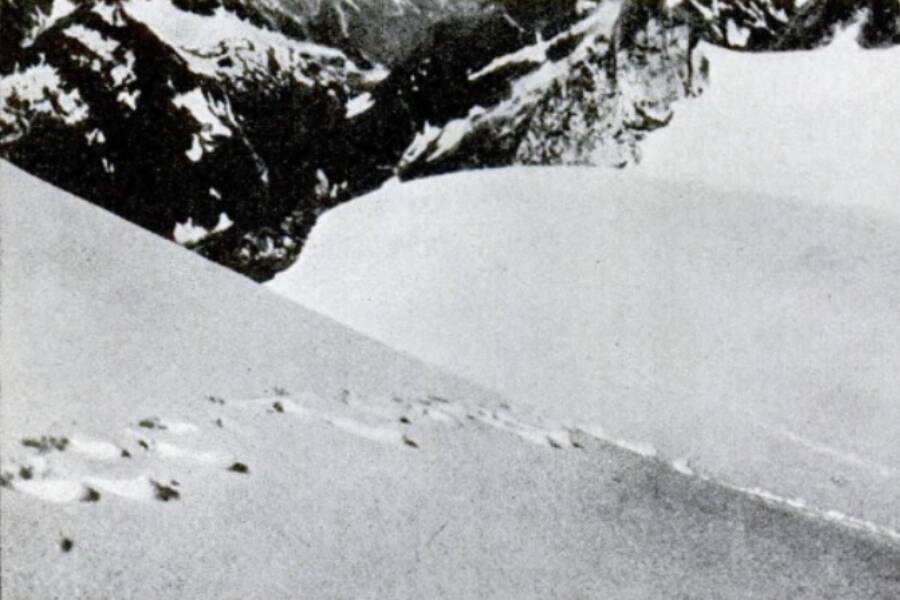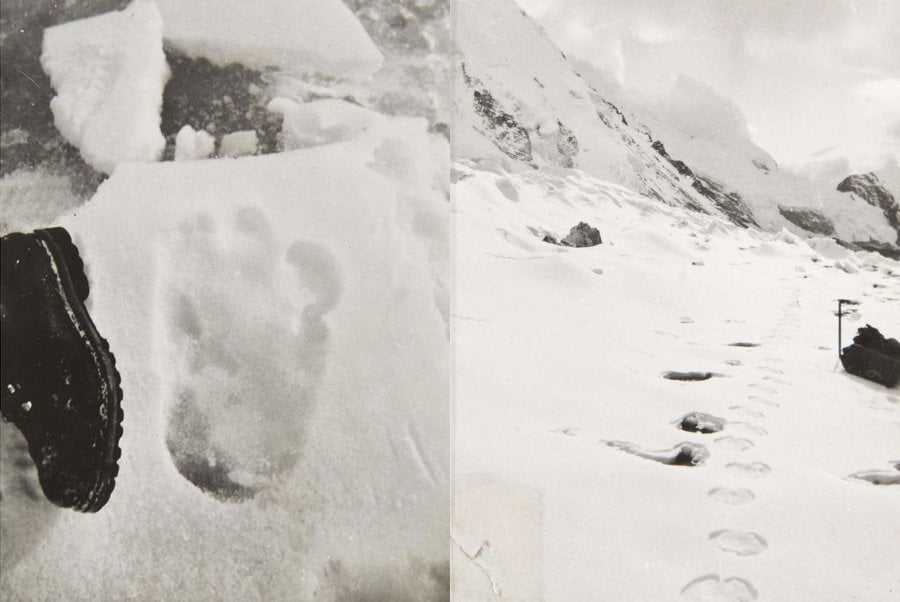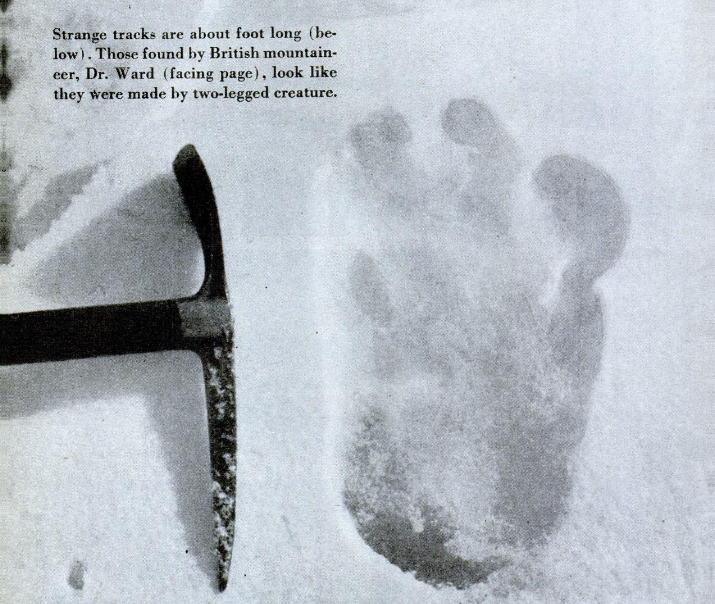The Yeti is an ape-like beast said to roam the Himalayas, and though its existence has never been proven, evidence ranging from footprints to blurry photos has been put forth as proof that the Abominable Snowman is real.

Public DomainA 1937 photograph of alleged Yeti footprints in the Himalayas taken by Frank S. Smythe and printed in Popular Science. They were later found to belong to a bear.
Stories of the Yeti, an ape-like cryptid said to roam the Himalayas, have circulated for centuries. Some Indigenous groups of the region believed in the existence of a “wild man,” and the creature even appears in several stories linked to Tibetan Buddhism. In the religion, Yeti sightings are sometimes considered a bad omen.
The story of the cryptid began to spread beyond the Himalayas in 1832, when English scholar James Prinsep published naturalist B. H. Hodgson’s account of an alleged Yeti sighting in his Journal of the Asiatic Society of Bengal. Later explorers claimed to find footprints, hairs, and even appendages that supposedly belonged to the Abominable Snowman.
Then, in the 1950s and ’60s, a series of British mountaineers put forth evidence of the Yeti’s existence. Several men photographed tracks, and Sir Edmund Hillary led an entire expedition in search of the enigmatic creature.
In recent years, advances in science have allowed researchers to test the DNA of purported Yeti body parts — and so far, all of them have been connected to other, known animals. Still, the supposed Yeti sightings detailed below captured the imaginations of people all over the world, and they may even inspire future scientists to find real evidence that the Abominable Snowman exists.
Explorer Eric Shipton’s Photographs Of Yeti Tracks

Eric Shipton/Christie’sAlleged Yeti footprints photographed by Eric Shipton at the Menlung Basin near Mount Everest in 1951.
In 1951, renowned British mountaineer Eric Shipton and his colleague Dr. Michael Ward were in the Himalayas for a reconnaissance expedition to search for potential routes to the top of Mount Everest. While walking across a glacier near the Menlung Basin at an elevation of between 15,000 and 16,000 feet, they stumbled upon a series of peculiar footprints in the snow.
As Ward later wrote in an article for the Alpine Journal in 1999, “We followed the tracks some way down the easy glacier and noted that whenever a narrow, six-inch-wide crevasse was crossed there seemed to be ‘claw’ marks in the snow.”
Each print was between 12 and 13 inches long and roughly six inches wide with one big toe and four or five smaller ones. The men didn’t have a ruler or measuring tape with them, so they used their own boots and ice picks as a size reference.
Shipton and Ward asked Sherpa Tenzing Norgay, who was accompanying them on their expedition, about the tracks, and he “had no doubt at all that the footprints belonged to the Yeti.” Norgay explained that there were two types of Yetis: “the yak-eating and the man-eating.” He also described the creatures as “walking on two legs, standing about five feet high and covered with brown hair” with “a face like a man, with a high forehead.” However, Norgay also confessed that he had never seen a Yeti himself.

Public DomainAn ice pick photographed next to the purported Yeti footprint for scale.
The photographs that Shipton and Ward captured of the tracks were printed in newspapers around the world, and some people have called them the best proof of the Yeti’s existence to date. However, others are convinced that the men’s Yeti sighting wasn’t what it seemed, and the footprints were simply the tracks of another creature that had been warped by melting snow.
But while the images made waves across the globe, they weren’t actually the first photos captured of alleged Yeti prints.





